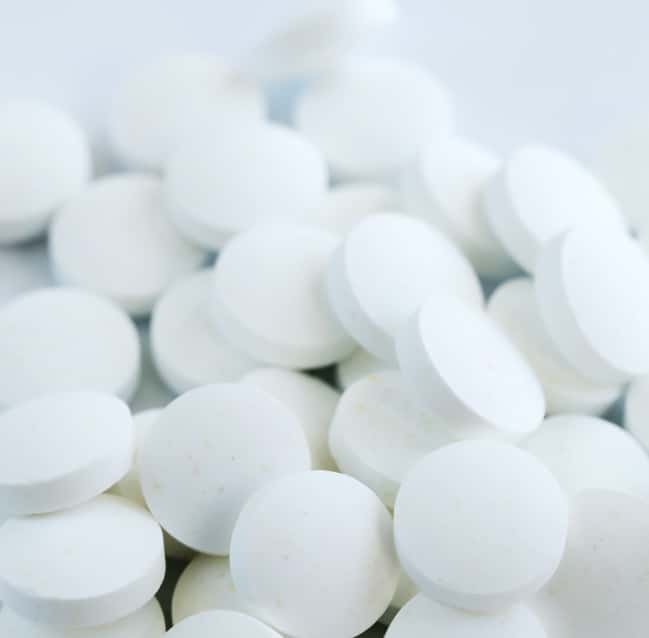Begin Your Journey
The help you need is just a step away. Contact us today to learn more about our treatment options.
Oxycodone is a prescription opioid medication that offers relief from moderate to severe pain—but its effects can vary depending on several personal factors.[1] The timeline of oxycodone’s efficacy involves considering variables such as dosage, formulation, individual physiology, and tolerance levels. Additionally, environmental factors, like whether the medication is taken with or without food, can also influence the duration and intensity of its effects.
Oxycodone is a powerful, semi-synthetic opioid painkiller prescribed to treat moderate to severe pain. The medication is derived from natural opiate alkaloids found in the opium poppy plant but has been chemically modified to be more potent. It binds to opioid receptors in the brain and body, reducing pain perception. However, it can also produce euphoria, which leads to its potential for abuse and addiction.
The effects of oxycodone can last for varying amounts of time, depending on the specific formulation taken:[2]
The pain-relieving effects of immediate-release oxycodone tend to last 4-6 hours and 12+ hours for extended-release oxycodone. However, some of the other effects, like sedation, nausea, and respiratory depression, can potentially last longer.
Additionally, several factors influence the duration of oxycodone’s effects.[3] The dosage amount plays a significant role, as higher doses typically result in longer-lasting effects; whether oxycodone is taken with or without food can also affect its absorption and subsequent duration of action.
Age and metabolism are also key determinants, as younger individuals or those with faster metabolic rates may process the drug more quickly, leading to shorter-lasting effects. Furthermore, your tolerance level to oxycodone can impact how long its effects are felt, with frequent users often requiring higher doses to achieve the same pain relief.
Interactions with other medications can either prolong or shorten the duration of oxycodone’s effects as well, depending on how they affect its metabolism and elimination from the body.
For recreational oxycodone abuse, the euphoric “high” is typically felt for 3-5 hours after taking an immediate-release formulation. The body eventually metabolizes the drug over time until its effects diminish.
It’s important to follow dosage instructions carefully, as taking too much oxycodone can result in an overdose with potentially fatal respiratory depression. Effects can linger, so activities like driving should be avoided until the effects completely disappear.
Amanda Stevens is a highly respected figure in the field of medical content writing, with a specific focus on eating disorders and addiction treatment. Amanda earned a Bachelor of Science degree in Social Work from Purdue University, graduating Magna Cum Laude, which serves as a strong educational foundation for her contributions.
Read moreThe help you need is just a step away. Contact us today to learn more about our treatment options.

The half-life determines how long the drug stays active in the system. Drugs with longer half-lives will have more persistent effects compared to those with shorter half-lives, which clear the body quicker.
The half-life of oxycodone refers to the time it takes for half of the dose to be eliminated from the body. The half-life for immediate-release formations is around 3-4 hours, whereas the half-life for extended-release formulations (like OxyContin) is around 4-6 hours.[4]
This means that for an immediate-release oxycodone pill, around half of the dose will be eliminated from the body within 3-4 hours after taking it. For extended-release versions, half the dose clears in 4-6 hours initially, but the remaining half takes around 8-10 more hours to clear once steady levels are reached.
Factors that can impact oxycodone’s half-life include:
Oxycodone can be detected in the body for varying lengths of time after last use, depending on the type of drug test being taken (among other factors):[5]

Signs of oxycodone overdose may include severe drowsiness, pinpoint pupils, slow or shallow breathing, unconsciousness, and potentially coma. If you suspect an overdose, seek immediate medical attention by calling emergency services.
Yes, oxycodone can indeed cause withdrawal symptoms, especially if it has been used regularly or in high doses over a prolonged period. Symptoms of withdrawal may include anxiety, restlessness, muscle aches, insomnia, sweating, nausea, vomiting, diarrhea, and flu-like symptoms.
There are several alternatives for managing pain besides oxycodone, depending on the type and severity of pain. Non-opioid pain relievers such as acetaminophen (Tylenol) or nonsteroidal anti-inflammatory drugs (NSAIDs) like ibuprofen or naproxen can be effective for mild to moderate pain.
Physical therapy, acupuncture, nerve blocks, and non-drug treatments such as massage or heat therapy may help alleviate pain. In some cases, alternative medications such as antidepressants or anticonvulsants can be prescribed for certain types of chronic pain.
Consult with a healthcare professional to determine the most suitable pain management approach for your needs.
Oxycodone and alcohol should not be combined as they both depress the central nervous system, leading to increased sedation, respiratory depression, and the risk of overdose. Combining oxycodone with alcohol can amplify the effects of both substances, impairing coordination, judgment, and cognitive function. It’s crucial to avoid alcohol while taking oxycodone and to follow your healthcare provider’s advice regarding alcohol consumption.
Taking oxycodone with certain other prescription medications can increase the risk of side effects, drug interactions, and adverse reactions. For example, combining oxycodone with other central nervous system depressants such as benzodiazepines (e.g., Xanax, Valium) or sedatives can lead to severe respiratory depression, coma, or death.
Additionally, medications that affect liver metabolism, such as certain antibiotics or antifungal drugs, may alter the metabolism of oxycodone, leading to increased levels of the drug in the body and a higher risk of toxicity. To avoid potentially harmful interactions, it’s essential to inform your healthcare provider about all medications you are taking, including prescription, over-the-counter, and herbal supplements.
© 2025 SOBA New Jersey. All Rights Reserved.
SEO by DIGITECH
If you are ready to take the first step toward a new life free from substances, we are here to answer any questions and help you begin your recovery journey.
© All Rights Reserved 2025. Soba New Jersey. SEO by DIGITECH .
(888) 229-7989